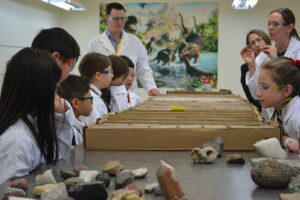A Leading Force in Scientific Excellence
As a national leader in analytical services, we are redefining the standards of precision and reliability.
Our clients span across diverse sectors, including environmental consulting, energy, mining, food & agriculture, life sciences, and government agencies. We proudly serve industries across Canada, USA and beyond, delivering accurate and defensible results that drive informed decisions and support public health, safety, and environmental stewardship.
Innovating Today for a Safer Tomorrow
Our Vision for the Future of Science
In every industry we serve, one thing remains constant: the trust our clients place in us for precise, dependable scientific results. This trust is the cornerstone of our reputation, honed over decades of delivering top-notch analytical services.
At AGAT Laboratories, we are dedicated to pushing the boundaries of excellence, ensuring that our work today paves the way for safer, smarter decisions tomorrow.

Latest News & Events

AGAT Laboratories Trusted by CBC News to Verify PFAS Water Testing in Newfoundland
AGAT Labs confirms PFAS contamination in Newfoundland water for CBC News, supporting communities with trusted, accredited testing services.

Celebrating a Key Milestone: US Air Force Jet Fuel Analysis at G7
AGAT Laboratories proudly continues its legacy of excellence with a second historic selection by the United States Air Force for jet fuel analysis at the G7 Summit in Kananaskis—demonstrating trusted precision, professionalism, and technical capability on the world stage.

Inspiring Young Scientists at AGAT Labs
AGAT Labs welcomed Grade 3 students from Webber Academy for a hands-on science day with labs, experiments, and a visit from fire department detection dogs.
AGAT By The Numbers
At AGAT Laboratories, our reach and impact are as precise as the science we deliver:
Locations across North America
Years of excellence in science across the globe
Worldwide clients
Careers at agat labs
Your Future is Bright
At AGAT Laboratories, we believe in your potential. From hands-on lab roles to impactful corporate careers, every position offers unique paths for growth and support.









